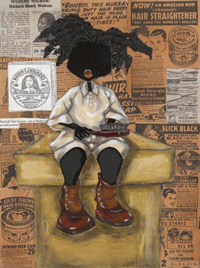
A few weeks ago, I had the pleasure of watching Chris Rock’s Good Hair at the Toronto International Film Festival. The idea for this comedic documentary was borne out of a question posed by Rock’s daughter Lola: " Daddy, how come I don’t have good hair?” This now infamous question leads Rock to reveal the connection that the mean streets of Compton, LA, have with a tranquil Hindu temple halfway around the world in India.
So, what is good hair? If you have firsthand knowledge of the black experience, then I’m almost certain that you’re no stranger to this phrase. It is my understanding that good hair refers to straight, longer-than-average hair that dances in the wind. In other words, good hair is not an ideal that the average Black female can achieve without the aid of relaxers or hair extensions. Folks, I do not agree with this definition; I am just merely relaying the widely held perception.
I was admittedly a little apprehensive about how much of the Black female culture Rock was going to expose to the world. I mean, although I no longer chemically straighten my hair or wear weaves or wigs, I’m still old school, and I believe some things are better left unsaid. Luckily, my fears were silenced within the first five minutes of the movie when I realized the subject was to be handled in a good-humoured yet honest way. Several Black celebrities (both male and female) sat down with Rock to dialogue about this often clandestine topic.
As evidenced by the fact that we annually spend billions – yep, BILLIONS – of dollars on hair-related products and services, it goes without saying that hair is a huge part of black culture. To better understand Black hair, Rock travelled to various salons in the U.S., both to converse with salon-goers and to observe the process that transforms Black hair into the Black woman’s facsimile of good hair. Additionally, this journey leads him to unearth somewhat of a “hair Mecca” inside an apparently reputable spiritual edifice.
As a whole, I think Good Hair is almost complete in exploring the contributing factors that have led Black hair to this point in time. However, all of the movie’s thoroughness failed to address one of the likely reasons a child would question the quality of their hair. Credible research has been done to confirm that a child’s primary role model in their formative years is their same-sex parent. As such, we can reasonably deduce that when mothers alter their hair by choosing to straighten it chemically or by choosing to wear wigs or hair extensions, it sends a message to their little girls. This message is confusing to impressionable youths if they themselves are not also subjected to a similar transformative hair regimen. Food for thought y’all!
Despite the comedic undertone of this film, I was left with the impression that we—the Black community—ultimately have the power and choice to redefine good hair. We have come a long way with accepting the difference in the hues of the skin. How nice it would be if we could make similar progress with accepting the texture of our hair.

